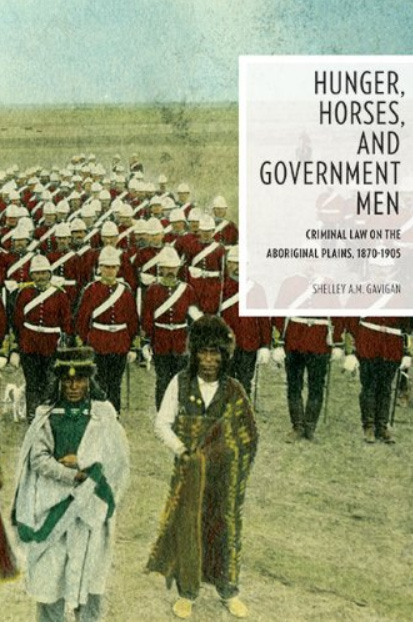Book Review: Criminal Law on the Aboriginal Plains
By exploring the southern Northwest Territory’s lower court records (modern Alberta and Saskatchewan) that were largely created by magistrate Hugh Richardson between 1870 and 1905, Shelly A. M. Gavigan adeptly examines how First Nations were affected by the imposition of criminal law. She argues that one must separate Indian Act laws and regulations from criminal law. In fact, she maintains that the “offences and prosecutions under the early Indian Acts did not criminalize the First Nations; rather, they ‘Indianized’ the First Nations. They were prosecuted as “Indians” – not as criminals – for violating the Indian Act.” (p.185) Gavigan’s main argument posits that lower court records indicate that First Nations engagement with this was complex. The reader will find First Nations as “victims, actors, informants, interpreters, accused, police guides, and complainants” who “participated in the criminal law, violated it, turned to it, and resisted it” (p.187) but in doing so were not simply orchestrators of their own oppression.
Gavigan also shows that magistrate Richardson attempted to be fair with all who entered his court. He ruled against police and Indian Agents in favour of First Nations or issued suspended sentences when it was obvious the offense – i.e. stealing food – was done because of necessity. His rulings, it appears, helped push Ottawa to make Indian Agents magistrates. Another interesting aspect is the non-over-representation of First Nations in court and in prison during this period.
Overall Gavigan’s study is a nuanced examination of low law and its implications for First Nations and Canadian colonialism that is a must-read.
Gavigan, Shelly A. M. Hunger, Horses, and Government Men: Criminal Law on the Aboriginal Plains, 1870-1905. Vancouver: University of British Columbia Press for the Osgoode Society for Canadian Legal History, 2012.


